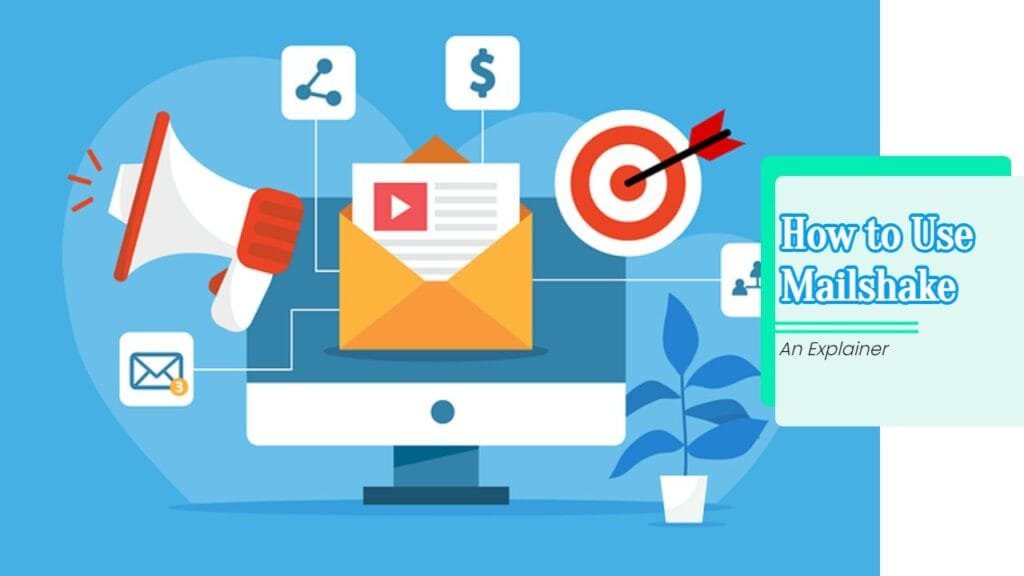Understanding Inbound Marketing
Evolution of Inbound Marketing
Inbound marketing sure has come a long way. It started out as a simple idea: reel in customers with quality content and interaction. But, like a good pair of jeans, it’s gotten a bit worn out. Nowadays, with roughly 5 million blog posts cropping up every day, grabbing attention is like finding a needle in a haystack. As more folks grow wary of the old tricks—like snagging free info through ebooks and webinars—there’s a need to freshen up our approach just to keep from getting lost in the shuffle.
Challenges Faced by B2B Companies
Trying to juggle inbound marketing can feel like herding cats, especially for B2B businesses. According to some smart folks at Forrester and Clari, over 85% of revenue teams regularly stumble over their targets, hinting that the classic methods might be playing hard to get. Finding and converting that dream client becomes a tough row to hoe when you’re contending with tired old tactics and eager competition. It’s not just about snagging leads anymore; it’s about making them stick around longer than a cat with a laser pointer.
The hiccups don’t stop there. Even after getting folks through the door, keeping ’em entertained is like trying to keep toddlers amused without a tablet. The leads that do stumble in often fall flat, lacking the moolah or interest to make a buy worth their while. For B2B companies, rethinking the playbook isn’t just an option—it’s a do-or-die necessity. New tactics and shiny strategies can make the difference between getting ghosted and building lasting connections.
Want some nitty-gritty details on how to beat these hurdles and keep the leads rolling in? Check out our lively resources on inbound marketing strategies and inbound marketing for B2B.
Inbound Marketing Effectiveness
Inbound marketing is like a treasure map, leading you to potential gold in the form of customers. But getting there is not always a straight road. To hit the jackpot, you’ve got to be smart about content syndication, engagement tactics, and authority building. Let’s chat about what’s up in this world of digital marketing.
Content Syndication Concerns
So, you’re throwing your content out there, hoping it sticks, right? But ever notice you end up with leads that are as useful as a chocolate teapot? That’s the hitch with content syndication. You pump out quality stuff, but sometimes it just attracts folks who aren’t ready to buy. They might be looking for content, but they’re not browsing for their wallets.
And speaking of content, the internet is swirling with it. Seriously, there are about 5 million blog posts popping up every day! Trying to give your content front-row seats in this crowd is one tough gig, which screams for some out-of-the-box thinking in how you spread and promote your stuff.
| Challenge | Description |
|---|---|
| Lead Quality | Syndication can draw folks with no money to spend |
| Content Saturation | Fighting for eyeballs in an ocean of new posts |
| Engagement Difficulty | Standing out in a crowd to win attention |
Engagement and Authority Building
A key part of cracking the code of inbound marketing lies in how you hold your audience’s attention and earn their trust. According to HubSpot, when you segment your emails right, you’re riding a wave. Imagine a 30% bump in people being nosy enough to open that email of yours, and clickthroughs shooting up by 50%! That’s what proper audience targeting looks like.
Getting up there as a go-to trusted resource means serving up content that’s as tasty as grandma’s cooking—stuff that speaks to your audience and brings them back for more. Pulling this off can skyrocket your brand’s creds and get people leaning toward you for advice and insights they trust.
Don’t just spitball this. Dig into analytics—it’s like your marketing’s secret decoder ring. Understanding who’s tuning in and why can level up your strategy big time. And with tools for inbound marketing analytics, you can home in on what your audience truly craves and tweak your approach to match.
In a nutshell, dealing with content syndication conundrums, and getting that authority and engagement just right, plays a big part in making inbound marketing work its magic.
Standing Out in Inbound Marketing
You know, with everyone and their cat seemingly blogging nowadays, making a splash in inbound marketing feels like trying to shout into a hurricane. Seriously, with about 5 million new blog posts popping up each day, catching anyone’s eye demands some serious cleverness (Sendoso). All that content means even your sparkling prose could vanish like a needle in a haystack.
Content Saturation on the Internet
Content saturation’s like a giant net snagging every biz looking to nab their perfect customer. If you’re like me, swinging for the fences, you gotta bring innovation and value every single time. It’s about scoping out those fresh, oddball topics, flipping the script, or diving beneath the surface to fish out gold nuggets that make people stick around.
| Trouble Spot | Stat |
|---|---|
| Blog Posts Daily | A mind-boggling 5 million |
| Marketing Moolah for Finance Folks | 9.49% of their haul |
| Media Moguls’ Marketing Spend | 14.27% of the pie |
I’m also trying newfangled formats like those quick video clips—because 53% of the marketing folks are vibing on TikTok and Instagram Reels now. This type of storytelling appears to have magic sparks (HubSpot).
Competing with Daily Blog Posts
Keeping a steady flow of posts is great, but I shoot for more than mere fillers. My aim? Each bit of content should ring like a bell in the minds of my target peeps. When crafted well, articles do more than inform—they earn trust, mark territory in the industry, and stand out heads above the rest.
I sprinkle a little spice into my inbound mix using different styles and sprucing them up with interactive tricks—I’m talking polls, quizzes, or cool infographics. They can transform a simple read into a more vivid trip and get folks talking back.
When I need a shot of inspiration to switch up my strategy, I dive into inbound marketing strategies and snoop around case studies. They spark ideas for capturing potential clients’ imaginations in a world flooded with too much content.
Outbound Love Methodology
The Outbound Love way of doing things puts an extra spoonful of care into your marketing recipe. It’s all about reaching out, not just to say hi, but to really connect with folks on a personal level. And hey, who doesn’t love a good connection, right? It’s like giving your potential clients a warm hug (without the awkwardness).
Benefits of Making it Personal
Getting personal has some sweet perks for businesses. When you stop treating folks like problem-solving machines and start seeing them as people, magic happens! Instead of focusing solely on getting that sale, think about making a connection. Around here, personal touch means your sales could go sky-high—like 10 times more effective! Plus, when you know your audience, it’s like having a cheat sheet on their likes and dislikes.
| Benefit | What’s in it for You |
|---|---|
| Boosted Conversion Magic | Saying hello with a personal touch can make conversion numbers soar! |
| Savings on Customer Snagging | Save cash by doing things differently from the usual marketing spiel. |
| More Bang from Your Sales Squad | Your team might close deals with their eyes closed. Well, almost. |
Just look at 6sense, a tech whizz company, pulling a whopping 5x ROI with this approach. It’s like finding a gold nugget in the real estate and investing sectors, where they’re buzzing about inbound strategies. Thoughtful reaching out is turning into the cool kid on the block for snagging top-notch leads (Search Engine Land).
Success Stories with Outbound Love
Wanna hear some good news? Many companies waddling in this Outbound Love pool have shown how personal magic works wonders. It’s like hitting the relationship jackpot! They chat, they connect, and they build trust. Who knew talking like a real person could make numbers look so good? Major wins in lead making, customer stick-around rates, and handling happy clients have been part of the package.
Take influencer marketing, for example. A huge 84% of marketers can’t stop talking about how it makes audiences sit up and pay attention (HubSpot). Think of big names like the folks behind Babish Culinary Universe—they’ve whipped up content that feels familiar and spotlights how putting out shareable stuff can make fans feel all warm and fuzzy inside.
Jumping on the Outbound Love express could be your ticket to fostering bonds that last, helping businesses grow and keep thriving. This approach not only turbocharges inbound marketing but keeps your name buzzing in the market hustle. Curious for more nuggets of wisdom on inbound marketing? Check out our strategies or peek at some neat examples.
Key Inbound Marketing Strategies
I’ve learned that boosting an inbound marketing plan hinges on three major things: diving into content marketing, making the most of search engine optimization (SEO), and crafting killer email newsletters. These elements don’t just grab attention; they keep it.
Investment in Content Marketing
Content marketing is like the bread and butter for businesses aiming to win folks over and keep ’em coming. Nowadays, half of the marketers out there are gearing up to pour more cash into content marketing this year (Sopro). It involves different formats—like blog posts, videos, and infographics—all aiming to hit the sweet spot with what the audience really needs.
| Content Format | Percentage of Marketers Using It |
|---|---|
| Blog Posts | 70% |
| Videos | 65% |
| Infographics | 50% |
| Podcasts | 30% |
Sticking to producing valuable stuff not only builds trust but also makes you a go-to in your industry. For more juicy tips on content playbooks, check out my guide on inbound marketing content.
Significance of Search Engine Optimization (SEO)
SEO ain’t just some techy thing to shrug off—it’s how folks find you online. Well-tweaked websites and content give you an upper hand on search engines, pulling in organic traffic. Marketers get it: a solid SEO plan is a game-changer for inbound marketing since it determines how easily folks can spot your stuff.
Among the tricks to nailing SEO are keyword digging, fine-tuning pages, and stacking up backlinks. Do these right, and you’ll see your pages climbing up the rankings and fetching more clicks. The trick is matching your content with what folks are punching into search bars, which keeps them engaged longer.
| SEO Strategy | Importance Level (1-5) |
|---|---|
| Keyword Research | 5 |
| On-Page Optimization | 4 |
| Backlink Building | 4 |
| Content Quality | 5 |
Curious about jazzing up your SEO? Swing by my piece on inbound marketing for SEO.
Utilization of Email Newsletters
Email newsletters are the secret sauce in my marketing mix, keeping that convo with current and potential customers alive and kicking. When emails are sent to select groups, they become more significant and pack a punch. The HubSpot State of Marketing Report says targeted emails get 30% more opens and 50% more clicks than broad ones.
| Email Metric | Average (2023) |
|---|---|
| Clickthrough Rate | 1.40% |
| Open Rate (Segmented) | Up by 30% |
| Clickthrough Rate (Segmented) | Up by 50% |
Craftily planned email pushes help boost interaction and drive conversions. Need some help with your emails? Take a peek at my article on inbound marketing tools.
Sinking money into content, smart tweaks for search engines, and spot-on email newsletters are the backbone of any spanking-new inbound marketing drive. For more ways to step it up, wander through inbound marketing strategies to level up your marketing gigs.
Importance of Intent Tracking
Enhancing Outreach Efficiency
Intent tracking plays an essential part in my marketing game plan by homing in on those hot leads. This is a lifesaver, especially in B2B marketing, where knowing who’s truly interested can ramp up my outreach hustle. By zeroing in on the folks who’ve shown they care, I’m able to customize messages, speed up the sales dance, and boost conversion rates (Sopro).
Using call-tracking tools is another way to stay ahead, particularly in businesses with drawn-out sales journeys. This tech collects handy titbits like who’s ringing and where to send them. It keeps track of chats to steer folks as they shop, especially in those tangled purchase decisions where multiple people are involved (Search Engine Land).
| Metric | Percentage |
|---|---|
| Buyers preferring email for communication | 67% |
Prioritizing Interested Leads
Zeroing in on leads who’ve shown they’re keen helps me to smartly steer resources towards those most likely to convert. This approach is even more crucial as inbound marketing loses some of its shine over the years. Many B2B outfits hit snags when trying to attract and turn their dream customers into clients, thanks to a growing disbelief in the usual lead bait like ebooks and webinar sign-up pages (Sendoso).
By being savvy about which leads to chat up based on their intent, I can tweak my words and methods to fit their exact cravings. This smart focus not only maximizes my outreach moves but lets me stay on the ball with evolving market vibes and buyer fancies.
When I deploy intent tracking, I find that leads get more responsive and involved, boosting the metrics across the board. For instance, folks using HubSpot have reported racking up 129% more leads, sealing 36% more deals, and scoring a 37% lift in wrapping up tickets within the first year on the platform (HubSpot).
Impact of HubSpot and Email Segmentation
When it comes to boosting your inbound marketing game, HubSpot and email segmentation are the real MVPs. I’ve got firsthand experience seeing how these strategies can supercharge lead generation and make your marketing way more effective.
HubSpot’s Influence on Lead Acquisition
HubSpot’s been a game changer for businesses diving into inbound marketing. Did you know that HubSpot users see a whopping 129% jump in leads, close 36% more deals, and see a 37% boost in closing support tickets within just a year? That’s straight from research (HubSpot). This all-in-one platform lets you track and automate your marketing campaigns with ease, helping you reach your audience like a pro.
| Metric | Improvement with HubSpot |
|---|---|
| Leads snagged | 129% boost |
| Deals wrapped up | 36% boost |
| Support ticket closings | 37% boost |
These numbers show just how powerful HubSpot can be for driving your lead gen and conversion goals to new heights. If you’re serious about revving up your inbound marketing efforts, HubSpot’s got your back.
Effectiveness of Segmented Emails
Email marketing is still a must-have in your inbound toolkit, but how you do it matters—a lot. Marketers say segmented emails get 30% more opens and 50% more clicks compared to non-segmented ones (HubSpot State of Marketing Report, 2023). That just screams why it’s important to tailor your messages to hit your audience’s sweet spot.
| Email Type | Open Rate Hike | Click Rate Hike |
|---|---|---|
| Segmented Emails | 30% | 50% |
| Unsegmented Emails | Not available | Not available |
By chopping up your email list into segments, you can send out personalized notes that speak directly to recipients. This approach not only cranks up engagement but also turbocharges your campaign’s overall success. Want to dive deeper? Check out our guides on inbound marketing strategies and inbound marketing tools.
Emerging Trends in Inbound Marketing
Things are moving fast when it comes to inbound marketing, right? You’ve got to keep your eyes peeled if you want to stay on top. I’ve noticed two things really shaking it up right now: mobile messaging is blowing up, and short-form videos are everywhere you look.
Growth in Mobile Messaging
One big thing that’s happening is mobile messaging is taking center stage. A recent HubSpot report showed that 25% of marketers are adding mobile messaging to their toolkit for 2024. This change kind of mirrors how people want their info – quick and to the point.
Mobile messaging helps brands chat with their audience like they’re just texting a friend. It makes things feel personal and super-fast, which is perfect for sending out promos, handling customer service, or just dropping quick news bites. Jumping on the mobile messaging bandwagon could mean better connections and stronger bonds between brands and their fans.
| Trend | Percentage of Marketers Utilizing |
|---|---|
| Mobile Messaging | 25% |
Utilization of Short-Form Video Content
And then there are short vids – they’re blowing up. About 53% of marketers are going all-in on stuff like TikTok, Instagram Reels, and YouTube Shorts for 2024. Why? These snappy videos catch eyes and build bridges between brands and people. Only 8% are thinking of pulling back on them (HubSpot), showing just how powerful they’ve become.
These quick snippets are perfect for telling a story, showing off a product, or letting customers share their experiences. They make the whole experience lively and fun, and they’re adaptable to wherever your folks are hanging out online.
| Trend | Percentage of Marketers Utilizing |
|---|---|
| Short-Form Video Content | 53% |
Riding the wave of mobile messaging and short-form videos in your marketing game can really amp up how you connect with your audience. By getting on board with these trends, I can make my campaigns click with the people I’m trying to reach. For more tips and tricks, check out these inbound marketing examples and dip into different inbound marketing tools to beef up my approach.
Industry-Specific Inbound Marketing
I’ve been diving into the world of inbound marketing, and what’s becoming obvious is that industries are cooking up all sorts of clever tactics to really butter up their audiences. Here, I’m going to chat about how the media biz is shaking things up with inbound marketing and how those in staffing and recruiting can get in on the action.
Media Industry Transition to Inbound
The media industry is in the middle of a big ol’ shift towards inbound marketing. The old-school moves, like blanket ads and cold-calling, are losing their swagger when it comes to catching the eye of potential leads. Instead, media companies are jumping on the inbound bandwagon, cooking up quality content that’s right on the nose for their audiences (LeadG2).
To get a grip on this new groove, media outfits are homing in on:
- Creating Content That Clicks: Crafting top-notch articles, podcasts, and videos that hit the sweet spot of what the audience cares about.
- SEO Savvy: Making sure their content is primed for search engines to boost visibility and pull in organic traffic like bees to honey.
- Social Media Mingling: Getting chummy with followers on platforms where their audience hangs out, helping build a community vibe around their brand.
These tactics not only put media companies on the radar but also crown them as trusted champs in their field. For a deeper dive into what works, take a look at some inbound marketing examples.
Tailoring Marketing for Staffing and Recruiting
The staffing and recruiting world has its own set of headaches, juggling different buyer personas can throw a wrench in the works. Inbound marketing offers a handy-dandy solution by letting recruitment pros whip up personalized content for their varied crowd, paving the way for better chats (LeadG2).
Here are the moves staffing and recruiting firms should consider:
- Targeted Content Creation: Pumping out resources that speak directly to job hunters, employers, and other key players, each-in-their-own language.
- Strategic Inbound Campaigns: Orchestrating campaigns that shepherd folks from just browsing to taking the plunge.
- Relationship Building: Cultivating connections through follow-ups, newsletters, and some solid social media back-and-forths, helping to nurture leads down the line.
Adopting these inbound marketing strategies can help staffing and recruiting firms power up their outreach and make tighter connections with their varied crowd. If you’re looking for more ways to polish up your inbound game, check out our guides on inbound marketing tactics and inbound marketing tools.





















